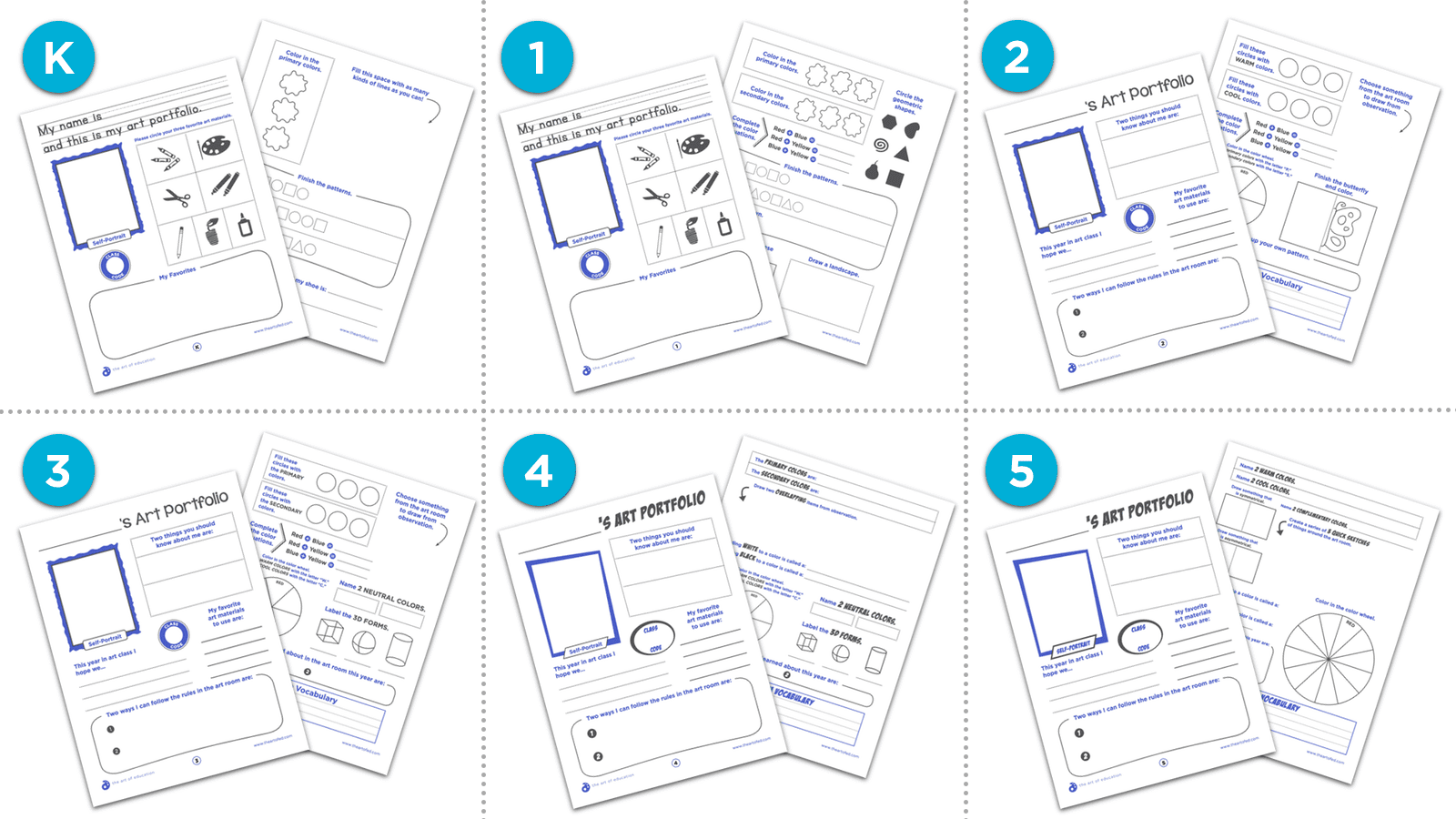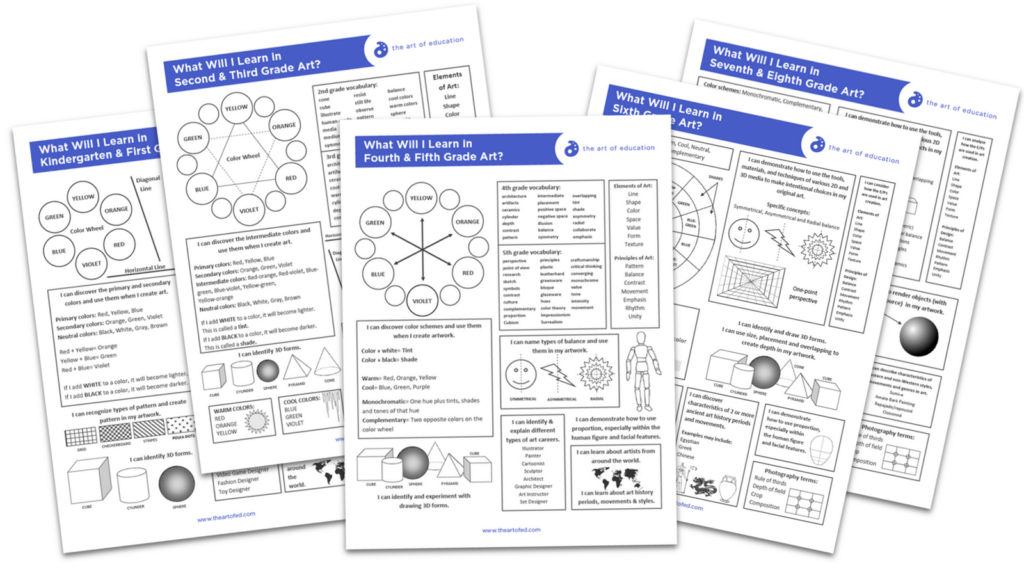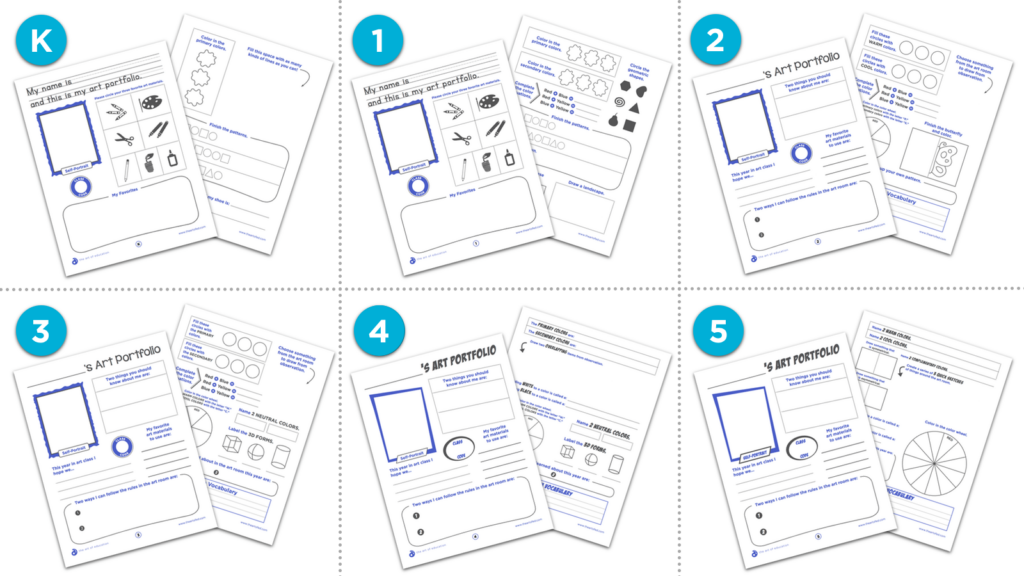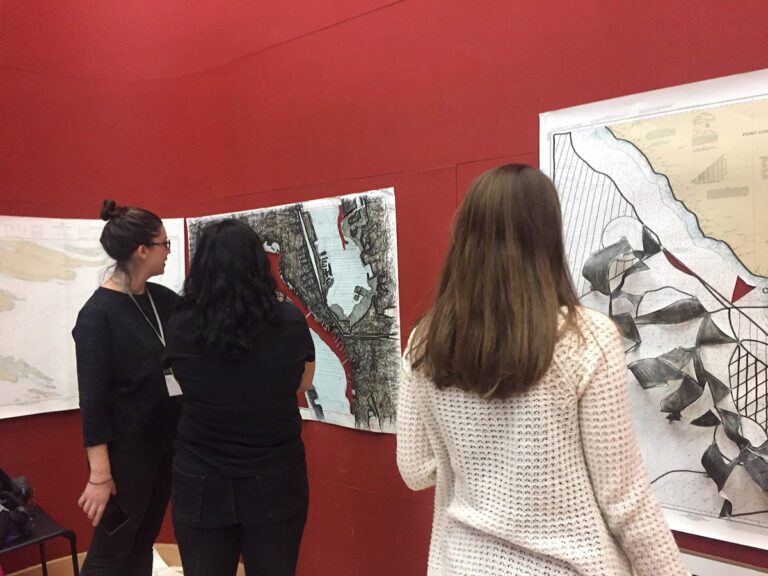Last year, we released some super popular K-8 and High School Curriculum Documents. Each sheet gave a one-page look at a sample art curriculum. If you haven’t seen them yet, they provide a great example of how you can quickly communicate your entire curriculum to your students, staff, and school community.
Today, we’re releasing some companion documents for the K-8 crowd. Below, you’ll find a set of helpful portfolio cover sheets you can download and use in your classroom!
What’s Included
Each set of sheets has two parts. The first page is a student interest inventory. This would be perfect to adhere to the front of a portfolio or sketchbook and use as a first-day activity. There is a place for the student’s name, class code, and some activities to help you get to know them a little bit better. The interest inventories get more involved as students get older. You can see the 2nd grade example below.
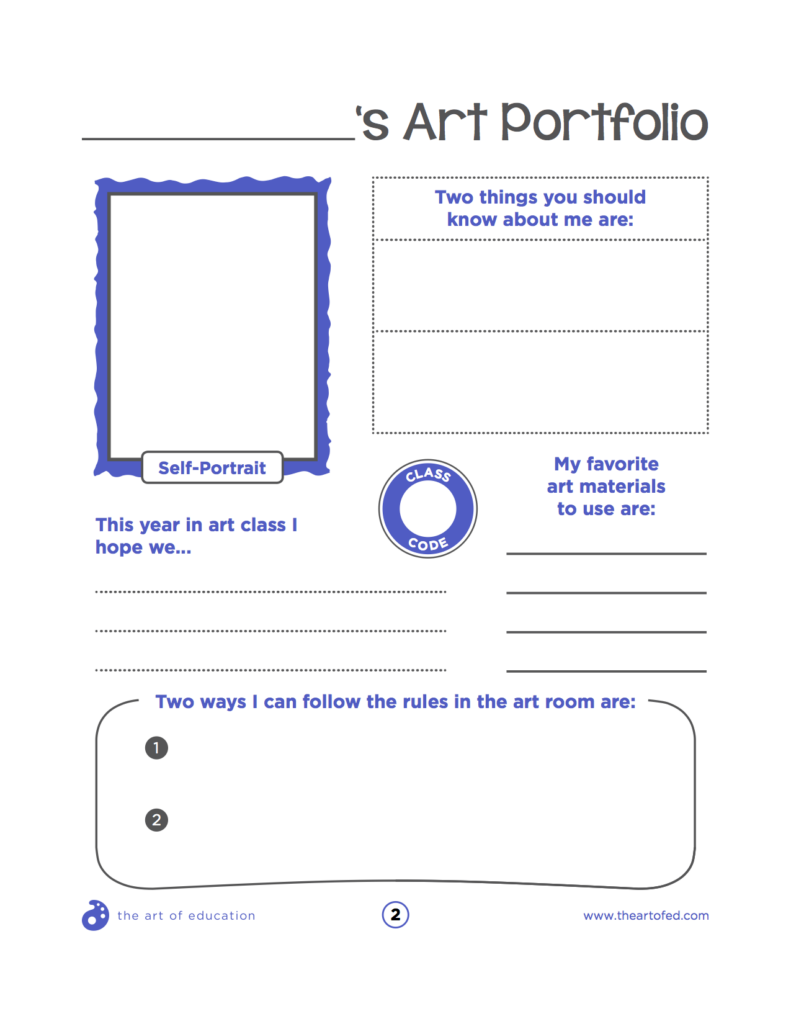
The second page in each set is an assessment sheet. These documents pull concepts from the corresponding curriculum documents. They would be perfect to use throughout the year to check for understanding or as a final assessment in the art room at the end of the grading period. For older students, there is also a place to keep track of new art vocabulary throughout the year. Once again, here’s the second grade example.
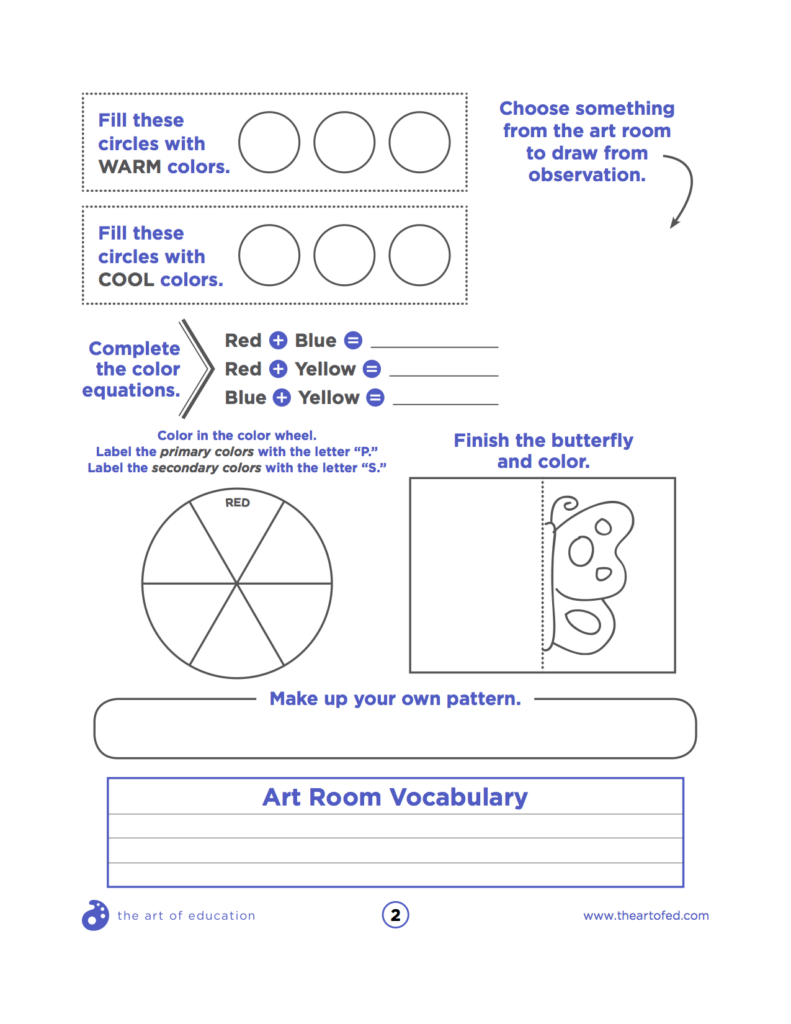
Download and make as many copies as you need!
K-5 Portfolio Cover Sheets
Download the K-5 sheets below.
6-8 Portfolio Cover Sheets
Download the 6-8 sheets below.
Download the 6-8 Sheets NowIf you’re looking for even more assessment strategies, check out the AOEU course Assessment in Art Education where participants spend an entire week looking at how to use portfolios as an assessment tool. You’ll leave the course with a comprehensive toolkit of lesson plans and organizational strategies to use in your classroom right away!
Do you use portfolios and sketchbooks with your students? What’s your system?
Can you think of other ways to use these resources in your classroom?
Magazine articles and podcasts are opinions of professional education contributors and do not necessarily represent the position of the Art of Education University (AOEU) or its academic offerings. Contributors use terms in the way they are most often talked about in the scope of their educational experiences.
